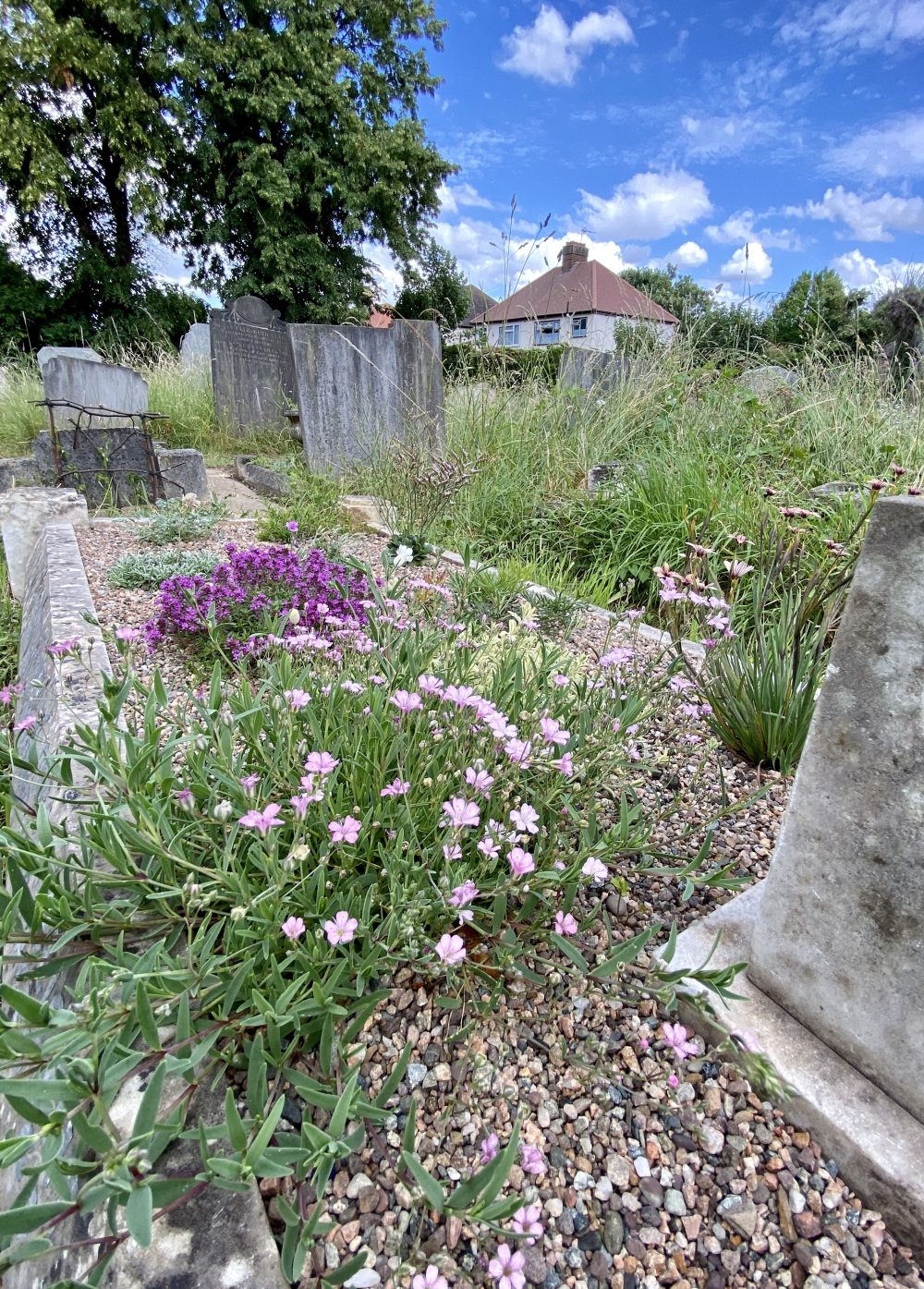
Burials in Bloom
Burials in Bloom: Lockdown Update
There is no doubt that Covid 19 had drastically altered how we engage with the world about us.
While we have had an enforced disconnect from many of our friends family and neighbours, many of us have reconnected with nature in a big way. In the first of a series of articles looking at how Lockdown has changed the way we interact with the great outdoors, Tim Hewitt gives us insight into how graves in a local churchyard have offered a life line to many would-be gardeners.
Since the Coronavirus crisis started, many people have found themselves with lots more time on their hands and with a desire to do something practical outdoors. Horticulture in general has boomed under lockdown. So, it is no surprise that the Burials in Bloom initiative at St Mary’s Churchyards (now in its third year), has grown.
Twenty six new graves have been adopted, with several participants taking on two or more. On Tuesday afternoons, an off shoot of the scheme has found up to ten participants at a time gardening in the churchyards, at appropriate social distance. This has meant that four new beds have been prepared for planting, with weeding, leaf mould and compost added and a mulch of wood chip laid over. A real sense of camaraderie and distanced support is in evidence.
However, the beauty of the scheme is that anyone can join in, whenever they are able to give time to it. There is a lady who gardens at 7 in the morning, every morning. An 11 year old girl comes in her lunch break. Others see it as the perfect antidote to a day of Zoom conferences. Parents appreciate that it gets children out of the house and focused on something practical. For several new, gardenless, participants, it is the chance to call a patch of land their own, that is most appealing.
The other attraction of the site is the variety of horticultural opportunities. Many of the graves are concrete boxes which lend themselves to Alpine gardening. Or low-growing , drought-tolerant ones. Older graves are free from edging and “bottomless”. There are meadow graves, woodland graves, full sun, part shade, sheltered or exposed, water features and gravel gardens. Experienced gardeners have enjoyed taking on new challenges alongside novices.
There are areas of the site, which have not really been gardened before, which have been opened up, thanks to lockdown volunteers. While the site is a haven for wildlife and parts are deliberately kept wild, it has also been good to see woodland areas made accessible and a greater diversity of plants grown. Increasingly, the space has been visited and used by locals, which is a welcome development. Children have been magnetised by the pond and its growing population of newts. So, all in all, the difficult situation which Coronavirus has created, has actually benefitted the Burials in Bloom scheme enormously.
Tim Hewitt.

